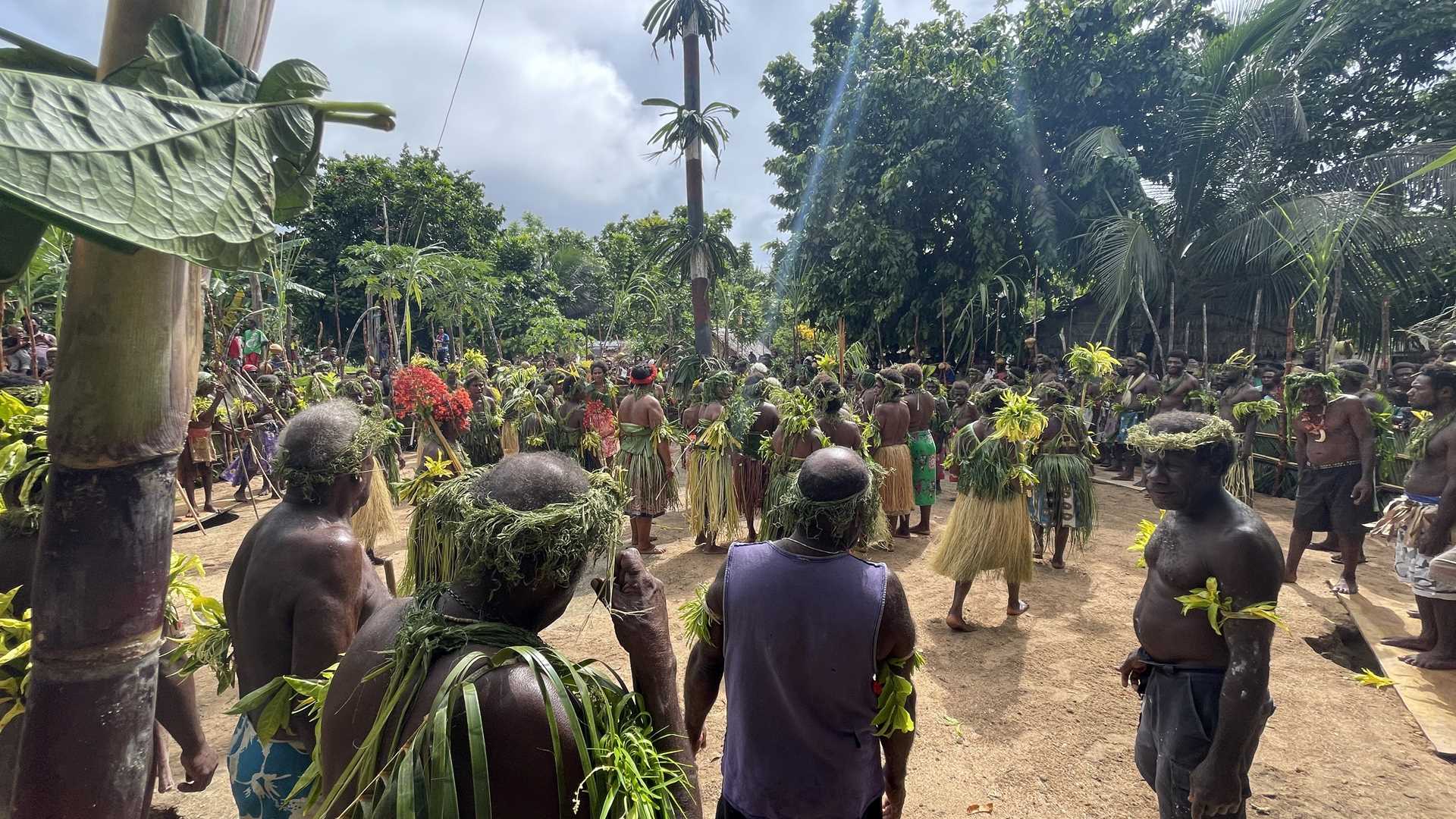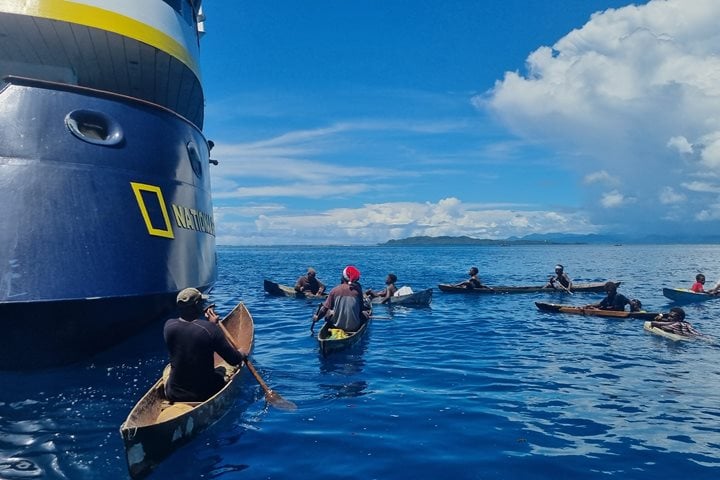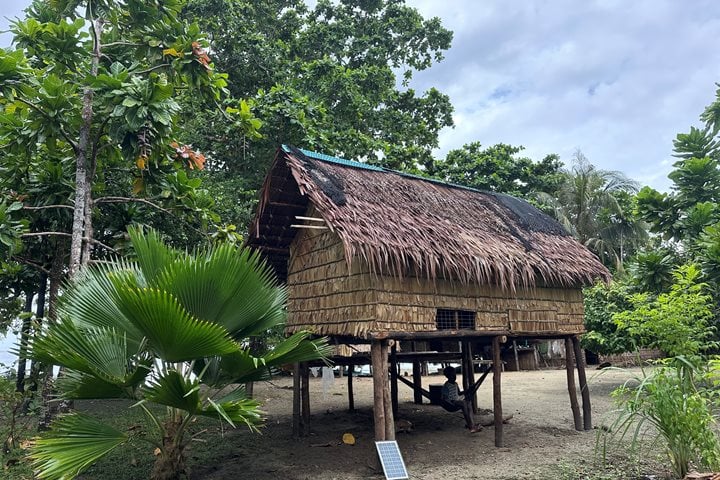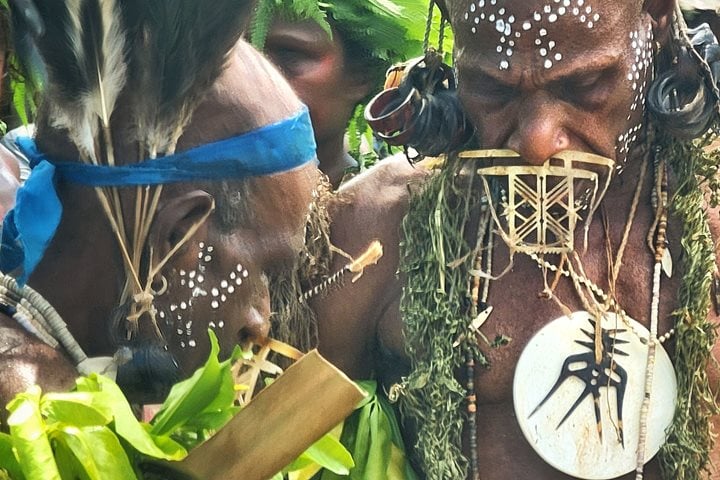National Geographic Orion entered the barrier reef of Utupua just after sunrise, and we anchored in a sheltered bay. Soon after breakfast, we went ashore and were greeted by smiling faces and a traditional welcome. We learned about life in the village and observed some incredible dances.
Later, it was time to explore. A Zodiac ride through the mangroves, self-exploration of the school, and kayaking amongst the mangroves were enjoyed by many. My favorite part was how the local kids played with us on the kayaks and Zodiacs. It was absolutely incredible to see how much fun could be had.
We set sail in the afternoon, leaving the village behind. Until next time!









